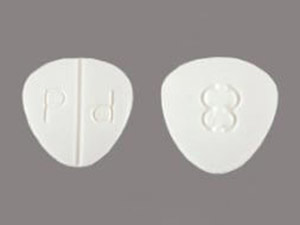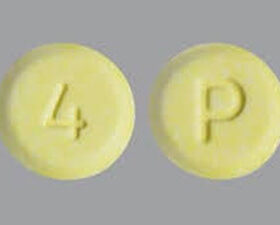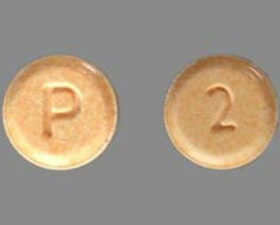- Your cart is empty
- Continue Shopping

Product

Dilaudid 8mg
$420.00 – $1,260.00
Add to cartDilaudid 8mg
$420.00 – $1,260.00
Oxycodone 10mg is a prescription opioid analgesic used for managing moderate to severe pain. It’s often prescribed for acute pain management, such as post-surgical pain or injury-related pain, as well as for chronic pain when other treatments are insufficient.
Uses
- Acute Pain Management: Oxycodone 10mg is used for short-term relief of moderate to severe pain, such as post-surgical pain or injury-related pain.
- Chronic Pain Management: It can also be prescribed for ongoing management of chronic pain conditions when other treatments are inadequate.
Mechanism of Action
- Oxycodone: It is a full opioid agonist that binds to mu-opioid receptors in the brain and spinal cord. This action alters the perception and emotional response to pain, providing analgesic effects.
Dosage and Administration
- Administration: Oxycodone 10mg tablets are typically taken every 4 to 6 hours as needed for pain relief. Dosage and frequency should be determined by a healthcare professional based on the severity of pain and the patient’s response to treatment.
- Dosage Adjustments: The dosage should be individualized based on the patient’s prior opioid use, the severity of pain, and the patient’s overall health condition. The goal is to use the lowest effective dose for the shortest duration necessary to manage pain.
Side Effects
Common side effects include:
- Constipation
- Nausea and vomiting
- Drowsiness
- Dizziness
- Dry mouth
- Itching
Serious side effects (requiring medical attention):
- Respiratory depression
- Severe hypotension
- Seizures
- Severe allergic reactions (rash, itching, swelling)
- Adrenal insufficiency
- Androgen deficiency
Warnings and Precautions
- Addiction and Abuse: Oxycodone has a high potential for addiction, abuse, and misuse, which can lead to overdose and death.
- Respiratory Depression: There is a risk of life-threatening respiratory depression, especially during initiation and dosage adjustments.
- Interactions with Other CNS Depressants: Combining oxycodone with alcohol, benzodiazepines, or other CNS depressants can increase the risk of severe sedation, respiratory depression, coma, and death.
- Accidental Ingestion: Accidental ingestion, particularly by children, can result in a fatal overdose.
- Pregnancy and Breastfeeding: Use during pregnancy can result in neonatal opioid withdrawal syndrome. Oxycodone can pass into breast milk and may harm a nursing baby.
Drug Interactions
- CNS Depressants: Concurrent use with other CNS depressants can enhance the sedative and respiratory depressant effects of oxycodone.
- Cytochrome P450 Interactions: Oxycodone is metabolized by CYP3A4 and CYP2D6 enzymes. Inhibitors of these enzymes can increase oxycodone levels, while inducers can decrease its effectiveness.
Storage
- Store at room temperature, away from moisture and heat.
- Keep out of reach of children and pets.
- Secure storage is essential to prevent misuse or accidental ingestion.
Disposal
- Follow local guidelines for disposing of prescription medications.
- Dispose of unused oxycodone by taking it to a drug take-back program or flushing it down the toilet if no take-back options are available (check local recommendations for specific guidelines).
Oxycodone 10mg should be used under the guidance of a healthcare provider, with careful monitoring for any adverse effects or signs of misuse. It’s crucial to follow the prescribed dosage and not make any changes without consulting a healthcare provider. Oxycodone should be part of a comprehensive pain management plan that includes non-pharmacologic therapies and other medications as appropriate.
Dilaudid 8mg, also known by its generic name hydromorphone, is a potent opioid analgesic primarily used for the management of severe pain. It is often prescribed when other less potent opioids have proven ineffective or when pain relief is inadequate.
Uses
- Pain Management: Dilaudid 8mg is used to treat moderate to severe pain, such as pain from surgery, injury, cancer, or other chronic conditions.
Mechanism of Action
- Hydromorphone: It is a full opioid agonist that acts on the mu-opioid receptors in the central nervous system, altering the perception of pain and producing analgesia.
Dosage and Administration
- Administration: Dilaudid 8mg tablets are typically taken orally, with or without food. It may also be administered via intravenous (IV) or intramuscular (IM) injection in clinical settings.
- Dosage Adjustments: Dosage should be individualized based on the severity of pain, the patient’s response to treatment, and any existing medical conditions. It’s essential to start with the lowest effective dose and titrate upward as needed while closely monitoring for adverse effects.
Side Effects
Common side effects include:
- Constipation
- Nausea and vomiting
- Drowsiness
- Dizziness
- Sweating
- Itching
- Dry mouth
- Respiratory depression (especially with higher doses)
Serious side effects (requiring medical attention):
- Respiratory depression
- Hypotension
- Seizures
- Hallucinations
- Adrenal insufficiency
- Allergic reactions (rash, itching, swelling)
- Androgen deficiency
Warnings and Precautions
- Addiction and Abuse: Hydromorphone has a high potential for addiction, abuse, and misuse, leading to overdose and death.
- Respiratory Depression: Life-threatening respiratory depression can occur, particularly during initiation of therapy or following a dosage increase.
- Accidental Exposure: Accidental exposure, especially in children, can result in fatal overdose.
- Hypotension: Hydromorphone can cause severe hypotension, particularly in patients with depleted blood volume or concurrent use of other medications that lower blood pressure.
Drug Interactions
- Central Nervous System (CNS) Depressants: Concurrent use with other CNS depressants (e.g., benzodiazepines, alcohol) can enhance the sedative and respiratory depressant effects of hydromorphone.
- MAO Inhibitors: Concomitant use of MAO inhibitors or within 14 days of their discontinuation can result in unpredictable reactions, including hypertensive crises.
Storage
- Store at room temperature away from light and moisture.
- Keep out of reach of children and pets.
Disposal
- Dispose of unused or expired hydromorphone properly according to local regulations or take it to a drug take-back program.
Dilaudid 8mg should be used cautiously and under the guidance of a healthcare provider due to its potential for addiction and serious side effects. Patients should be closely monitored for respiratory depression, especially during initiation and dose adjustments. It is crucial to follow the prescribed dosage and not to exceed it without consulting a healthcare professional. Dilaudid should be part of a comprehensive pain management plan that may include non-pharmacologic therapies and other medications.




Reviews
There are no reviews yet.